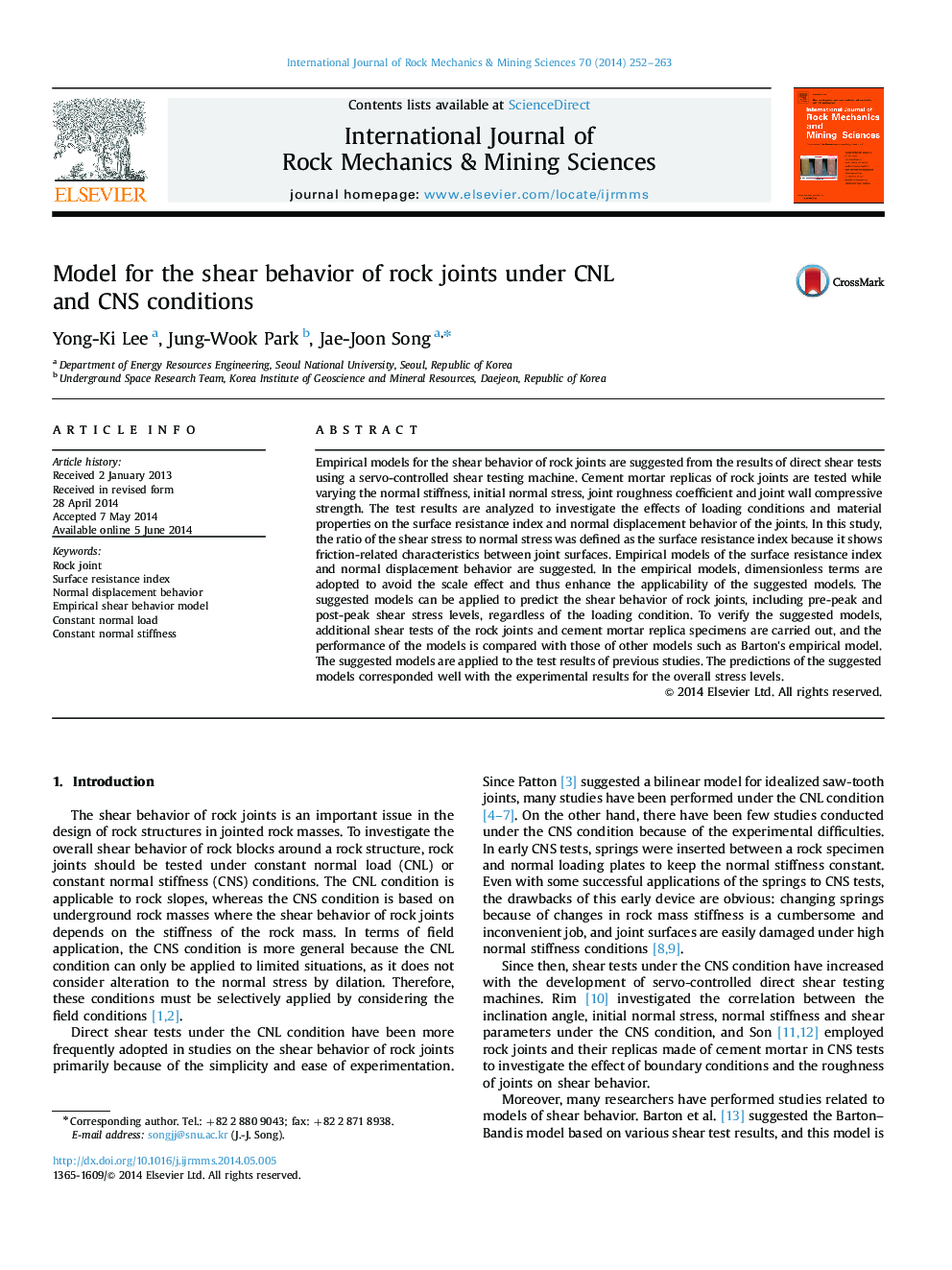| Article ID | Journal | Published Year | Pages | File Type |
|---|---|---|---|---|
| 809100 | International Journal of Rock Mechanics and Mining Sciences | 2014 | 12 Pages |
•The direct shear tests were performed on rock joints and cement mortar replicas.•Test results of replica specimens were analyzed to construct a shear behavior model.•A model for the shear behavior of joints under CNL and CNS conditions was suggested.•The suggested model consists of SRI and normal stress models.•The suggested model was verified by comparing the results of previous researches.
Empirical models for the shear behavior of rock joints are suggested from the results of direct shear tests using a servo-controlled shear testing machine. Cement mortar replicas of rock joints are tested while varying the normal stiffness, initial normal stress, joint roughness coefficient and joint wall compressive strength. The test results are analyzed to investigate the effects of loading conditions and material properties on the surface resistance index and normal displacement behavior of the joints. In this study, the ratio of the shear stress to normal stress was defined as the surface resistance index because it shows friction-related characteristics between joint surfaces. Empirical models of the surface resistance index and normal displacement behavior are suggested. In the empirical models, dimensionless terms are adopted to avoid the scale effect and thus enhance the applicability of the suggested models. The suggested models can be applied to predict the shear behavior of rock joints, including pre-peak and post-peak shear stress levels, regardless of the loading condition. To verify the suggested models, additional shear tests of the rock joints and cement mortar replica specimens are carried out, and the performance of the models is compared with those of other models such as Barton׳s empirical model. The suggested models are applied to the test results of previous studies. The predictions of the suggested models corresponded well with the experimental results for the overall stress levels.
